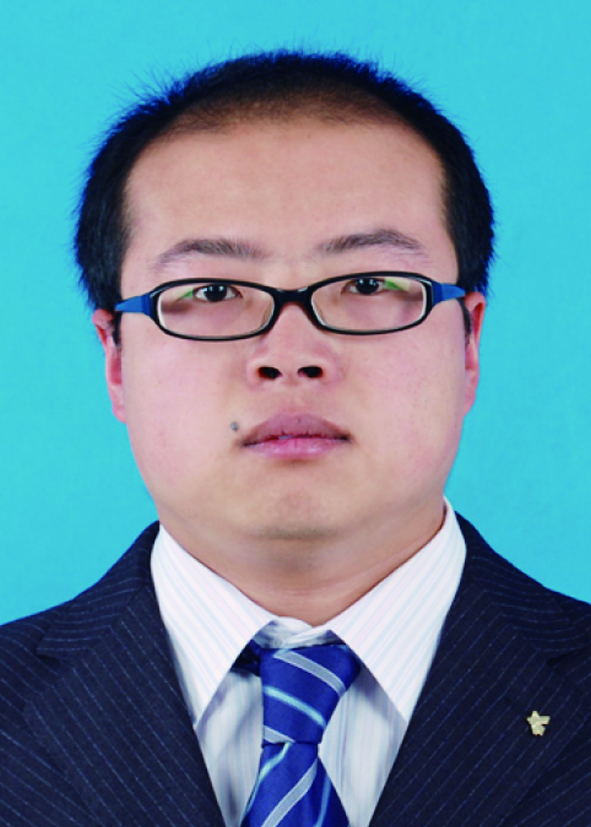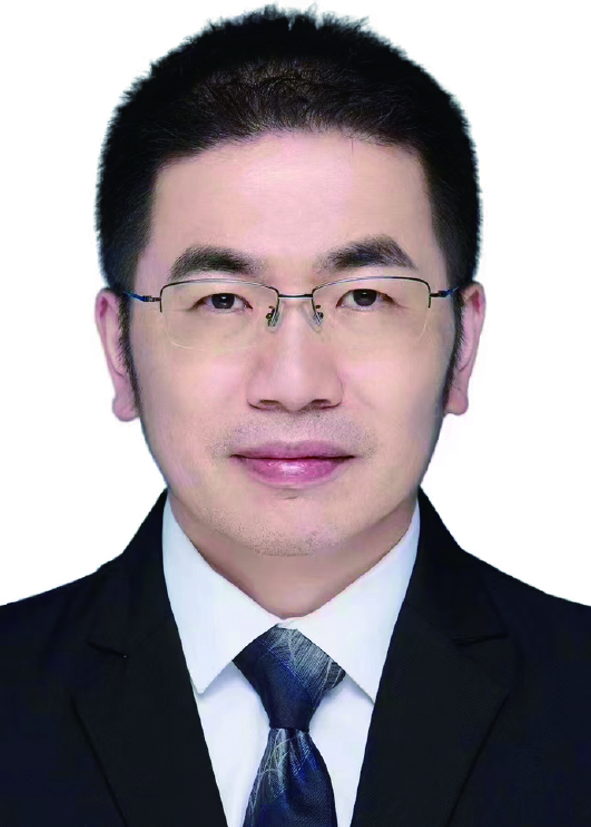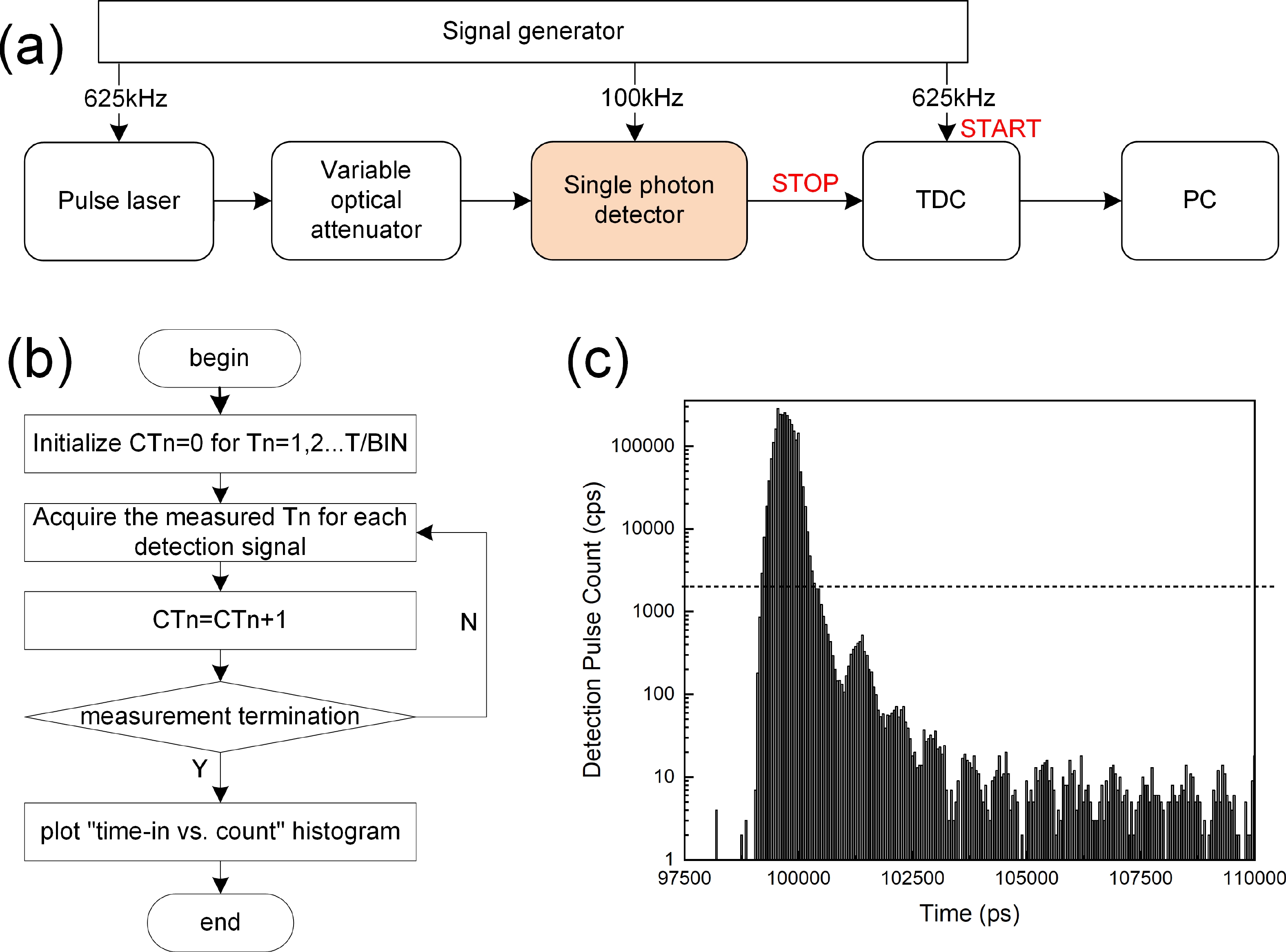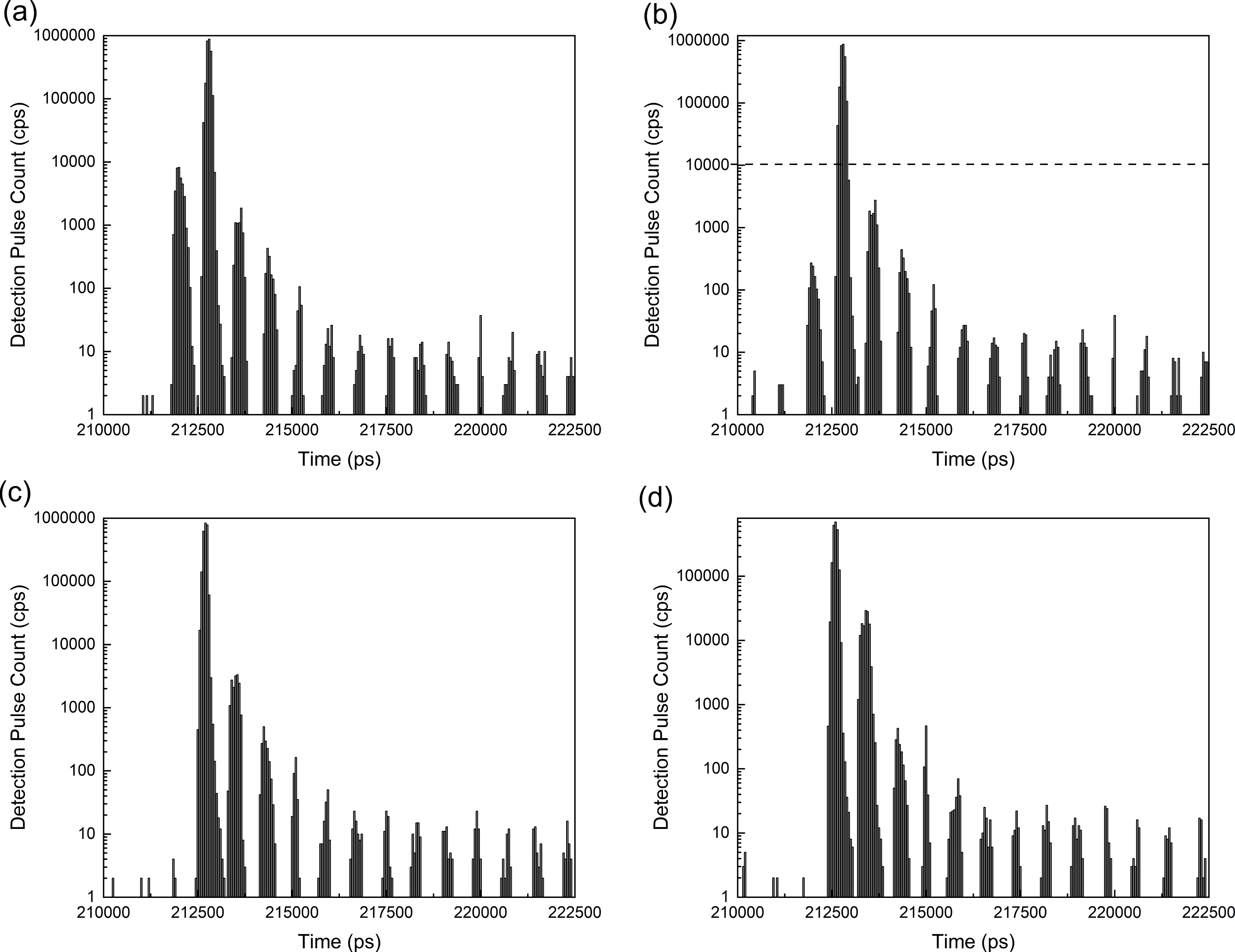| Citation: |
Lianjun Jiang, Dongdong Li, Dawei Li, Yuqiang Fang, Ming Liu, Wei Jiang, Zhilin Xie, Guoqing Liu, Rui Ma, Yukang Zhao, Jian Sun, Lei Chang, Lin Yu, Shibiao Tang. Jitter suppression scheme for detection pulses in high-speed sinusoidal gated single-photon detectors[J]. Journal of Semiconductors, 2025, In Press. doi: 10.1088/1674-4926/25030031
****
L J Jiang, D D Li, D W Li, Y Q Fang, M Liu, W Jiang, Z L Xie, G Q Liu, R Ma, Y K Zhao, J Sun, L Chang, L Yu, and S B Tang, Jitter suppression scheme for detection pulses in high-speed sinusoidal gated single-photon detectors[J]. J. Semicond., 2025, accepted doi: 10.1088/1674-4926/25030031
|
Jitter suppression scheme for detection pulses in high-speed sinusoidal gated single-photon detectors
DOI: 10.1088/1674-4926/25030031
CSTR: 32376.14.1674-4926.25030031
More Information-
Abstract
Quantum key distribution (QKD) achieves information-theoretic security based on quantum mechanics principles, where single-photon detectors (SPDs) serve as critical components. This study focuses on the sinusoidal gated SPDs widely used in high-speed QKD systems. We investigate the mechanisms underlying the rising-edge jitter in detection signals, identifying contributions from factors such as the temporal width of injected optical pulses, avalanche generation processes, avalanche signal extraction, and pulse discrimination. To address the issue of excessive jitter-induced bit errors, we propose a retiming scheme that utilizes coincidence signals synchronized with the sinusoidal gating signal. This approach effectively suppresses detection signal jitter and reduces the after-pulse probability of the detector. Experimental validation using a high-precision time-to-digital converter (TDC) demonstrates a significant reduction in the rising-edge jitter distribution after applying the suppression scheme. The proposed method features clear principles and straightforward engineering implementation, avoiding direct interference with the detector’s operational processes. The designed high-speed sinusoidal gated InGaAs/InP SPD operates at 1.25GHz, achieving a remarkable reduction in after-pulse probability from 10.7% (without jitter suppression) to 0.72%, thereby enhancing the overall performance of QKD systems. -
References
[1] Hadfield R H. Single-photon detectors for optical quantum information applications. Nat Photonics, 2009, 3, 696 doi: 10.1038/nphoton.2009.230[2] Itzler M A, Jiang X D, Entwistle M, et al. Advances in InGaAsP-based avalanche diode single photon detectors. J Mod Opt, 2011, 58(3/4), 174[3] Lu C Y, Cao Y, Peng C Z, et al. Micius quantum experiments in space. Rev Mod Phys, 2022, 94(3), 035001 doi: 10.1103/RevModPhys.94.035001[4] Peng C Z, Zhang J, Yang D, et al. Experimental long-distance decoy-state quantum key distribution based on polarization encoding. Phys Rev Lett, 2007, 98(1), 010505 doi: 10.1103/PhysRevLett.98.010505[5] Liao S K, Yong H L, Liu C, et al. Long-distance free-space quantum key distribution in daylight towards inter-satellite communication. Nat Photonics, 2017, 11, 509 doi: 10.1038/nphoton.2017.116[6] Li D D, Zhao M S, Li Z, et al. High dimensional quantum key distribution with temporal and polarization hybrid encoding. Opt Fiber Technol, 2022, 68, 102828 doi: 10.1016/j.yofte.2022.102828[7] Li D D, Shen Q, Chen W, et al. Proof-of-principle demonstration of quantum key distribution with seawater channel: Towards space-to-underwater quantum communication. Opt Commun, 2019, 452, 220 doi: 10.1016/j.optcom.2019.07.037[8] Yu C, Shangguan M J, Xia H Y, et al. Fully integrated free-running InGaAs/InP single-photon detector for accurate lidar applications. Opt Express, 2017, 25(13), 14611 doi: 10.1364/OE.25.014611[9] Yu C, Qiu J W, Xia H Y, et al. Compact and lightweight 1.5 μ m lidar with a multi-mode fiber coupling free-running InGaAs/InP single-photon detector. Rev Sci Instrum, 2018, 89(10), 103106 doi: 10.1063/1.5047472[10] Jiang L J, Fang Y Q, Yu C, et al. Miniaturized free-running InGaAs/InP single-photon detector (invited). Infrared Laser Eng, 2023, 52(3), 20230017. (in Chinese). doi: 10.3788/IRLA20230017[11] Shi Y L, Li Y X, Bai R, et al. Advancement of shortwave infrared single-photon detectors(invited). Infrared Laser Eng, 2023, 52(3), 27. (in Chinese).[12] Sun Y W, Hu X M, Yu P, et al. Detecting stereoscopic distribution of carbon dioxide using single photon spectroscopy. Fundam Res, 2025, in press[13] Xu Q, Yu C, Cui D J, et al. Compact and fully functional high-frequency sine wave gating InGaAs/InP single-photon detector module. IEEE J Sel Top Quantum Electron, 2025, 31(5: Quantum Materials and Quantum Devices), 3801007[14] Tang Y L, Zhou C, Li D D, et al. Time-Bin phase-encoding quantum key distribution using Sagnac-based optics and compatible electronics. Opt Express, 2023, 31(16), 26335 doi: 10.1364/OE.496723[15] Li D D, Gao S, Li G C, et al. Field implementation of long-distance quantum key distribution over aerial fiber with fast polarization feedback. Opt Express, 2018, 26(18), 22793 doi: 10.1364/OE.26.022793[16] Tang Y L, Xie Z L, Zhou C, et al. Field test of quantum key distribution over aerial fiber based on simple and stable modulation. Opt Express, 2023, 31(16), 26301 doi: 10.1364/OE.494318[17] Chen Y A, Zhang Q, Chen T Y, et al. An integrated space-to-ground quantum communication network over 4, 600 kilometres. Nature, 2021, 589, 214 doi: 10.1038/s41586-020-03093-8[18] Li Y, Cai W Q, Ren J G, et al. Microsatellite-based real-time quantum key distribution. Nature, 2025, 640(8057), 47 doi: 10.1038/s41586-025-08739-z[19] Jiang L J, Li D D, Fang Y Q, et al. Countermeasure against blinding attack for single-photon detectors in quantum key distribution. J Semicond, 2024, 45(4), 042702 doi: 10.1088/1674-4926/45/4/042702[20] Zhang J, Itzler M A, Zbinden H, et al. Advances in InGaAs/InP single-photon detector systems for quantum communication. Light Sci Appl, 2015, 4(5), e286 doi: 10.1038/lsa.2015.59[21] Zhang J, Thew R, Gautier J D, et al. Comprehensive characterization of InGaAs–InP avalanche photodiodes at 1550 nm with an active quenching ASIC. IEEE J Quantum Electron, 2009, 45(7), 792 doi: 10.1109/JQE.2009.2013210[22] Zhang J, Eraerds P, Walenta N, et al. 2.23 GHz gating InGaAs/InP single-photon avalanche diode for quantum key distribution. Advanced Photon Counting Techniques IV, 2010, 7681[23] Jiang W H, Liu J H, Liu Y, et al. 125 GHz sine wave gating InGaAs/InP single-photon detector with a monolithically integrated readout circuit. Opt Lett, 2017, 42(24), 5090 doi: 10.1364/OL.42.005090[24] Lunghi T, Barreiro C, Guinnard O, et al. Free-running single-photon detection based on a negative feedback InGaAs APD. J Mod Opt, 2012, 59(17), 1481 doi: 10.1080/09500340.2012.690050[25] Yan Z Z, Hamel D R, Heinrichs A K, et al. An ultra low noise telecom wavelength free running single photon detector using negative feedback avalanche diode. Rev Sci Instrum, 2012, 83(7), 073105 doi: 10.1063/1.4732813[26] Jiang X D, Itzler M A, Ben-Michael R, et al. Afterpulsing effects in free-running InGaAsP single-photon avalanche diodes. IEEE J Quantum Electron, 2008, 44(1), 3 doi: 10.1109/JQE.2007.906996[27] Guo Z H, Xiao L T. Photon statistical analyses for after-pulse probability. Shanxi Electronic Technology, 2007, (3), 3(in Chinese)[28] Cao Y, Su Y, Jiang L J, et al. Afterpulse suppression scheme of InGaAs/InP high speed sinusoidal gated single photon detector. Infrared Laser Eng, 2024, 53(4), 59[29] He D Y, Wang S, Chen W, et al. Sine-wave gating InGaAs/InP single photon detector with ultralow afterpulse. Appl Phys Lett, 2017, 110(11), 111104 doi: 10.1063/1.4978599[30] Liang Y, Fei Q L, Liu Z H, et al. Low-noise InGaAs/InP single-photon detector with widely tunable repetition rates. Photon Res, 2019, 7(3), A1 doi: 10.1364/PRJ.7.0000A1[31] Tada A, Namekata N, Inoue S. Saturated detection efficiency of single-photon detector based on an InGaAs/InP single-photon avalanche diode gated with a large-amplitude sinusoidal voltage. Jpn J Appl Phys, 2020, 59(7), 072004 doi: 10.35848/1347-4065/ab9625[32] Fang Y Q, Chen W, Ao T H, et al. InGaAs/InP single-photon detectors with 60% detection efficiency at 1550 nm. Rev Sci Instrum, 2020, 91(8), 083102 doi: 10.1063/5.0014123[33] Fan Y B, Shi T T, Ji W J, et al. Ultra-narrowband interference circuits enable low-noise and high-rate photon counting for InGaAs/InP avalanche photodiodes. Opt Express, 2023, 31(5), 7515 doi: 10.1364/OE.478828[34] Shi T T, Fan Y B, Yan Z Y, et al. GHz photon-number resolving detection with high detection efficiency and low noise by ultra-narrowband interference circuits. J Semicond, 2024, 45(3), 032702 doi: 10.1088/1674-4926/45/3/032702 -
Proportional views





 Lianjun Jiang got his PhD from University of Science and Technology of China in 2016. Now he works as system expert in QuantumCTek Co., Ltd. His research focuses on quantum key distribution and single photon detector.
Lianjun Jiang got his PhD from University of Science and Technology of China in 2016. Now he works as system expert in QuantumCTek Co., Ltd. His research focuses on quantum key distribution and single photon detector. Shibiao Tang got his PhD from University of Science and Technology of China in 2009. Now he works as vice president of QuantumCTek Co., Ltd. His research focuses on quantum key distribution and quantum computing.
Shibiao Tang got his PhD from University of Science and Technology of China in 2009. Now he works as vice president of QuantumCTek Co., Ltd. His research focuses on quantum key distribution and quantum computing.
 DownLoad:
DownLoad:

















